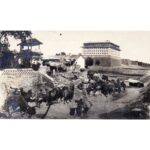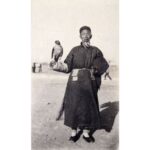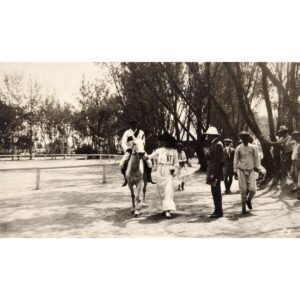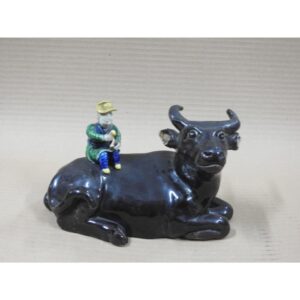Photography Camels by a Watering Hole
A black-and-white photograph showing camels drinking water in front of the city walls of Beijing. A farming settlement can be seen on the slopes above them. Camels and camel caravans are a common subject of early photographers in China. Camel transports entered China via the northern route through Central Asia and what is now the Xinjiang 新疆 Autonomous Region. Camels were used to transport goods locally, especially coal from nearby mines. In addition, silk, tea, and other goods were transported along the famous Silk Road to Central Asia and Europe. Fewer people had access to camels than owned donkeys or mules. In China, camels were called “desert ships” because of the way they were able to walk on sand.
The photograph is the 142nd of 449 photographs of Beijing and its surroundings in the album of Ivan Skušek Jr., purchased during his stay in Beijing (1914–1920). In the handwritten inventory of the album, the photograph is referred to as Kameele an der Tränke. ... more
A black-and-white photograph showing camels drinking water in front of the city walls of Beijing. A farming settlement can be seen on the slopes above them. Camels and camel caravans are a common subject of early photographers in China. Camel transports entered China via the northern route through Central Asia and what is now the Xinjiang 新疆 Autonomous Region. Camels were used to transport goods locally, especially coal from nearby mines. In addition, silk, tea, and other goods were transported along the famous Silk Road to Central Asia and Europe. Fewer people had access to camels than owned donkeys or mules. In China, camels were called “desert ships” because of the way they were able to walk on sand.
The photograph is the 142nd of 449 photographs of Beijing and its surroundings in the album of Ivan Skušek Jr., purchased during his stay in Beijing (1914–1920). In the handwritten inventory of the album, the photograph is referred to as Kameele an der Tränke. (DZ, MV)





































Do you have a comment or additional information about the subject?